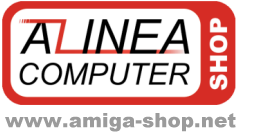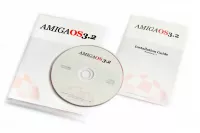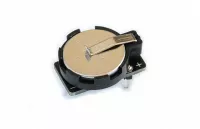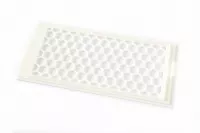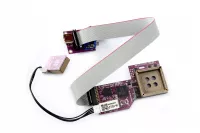Products description
Micromys V5 is the long-awaited successor to Micromys V4. Our approach to a PS2 mouse adapter is now taken to more computers than before: Supporting Amiga, Atari ST/STe/TT/Falcon, VIC-20 and the Atari 8-bit series with a total of nine different modes of operation, Micromys V5 is probably the most versatile mouse adapter on the market.
Just like it's predecessor, Micromys V5 uses our known-good automatic computer recognition without the need for DIP switches. The adapter figures out most computer environments automatically, and choosing a mode of operation is done by holding down one or more mouse buttons during power-up.
Depending on the computer that Micromys V5 is connected to, two or more of the following modes of operation are available:
Amiga wheel mode:
Without drivers, this is a 2-button mode. Wheel and middle-mouse button can be activated with our driver. No further connections to the Amiga are required: Wheel and middle mouse button data is all transferred through the same mouse port, and the joystick port remains free.
You can find the driver download in our WIKI
Amiga 3-button mode without drivers:
This is a completely driverless mode of operation. Programs that support hte "native" middle mouse button (for example Directory Opus) will work without any special additional software.
Atari ST/STe/TT/Falcon:
The Atari ST uses two buttons only. Middle mouse button and wheel are ignored in this mode.
1351 emulation;
The Commodorre 1351 proportional mouse has become the de-facto standard for a proportional mouse on the C64. Introduced with the GEOS operating system, it was quickly adopted by other programs. The popular music programs MSSIAH and Prophet64 work best in this mode. Micromys even adds to this standard by supporting the mouse wheel of a PS2 mouse.
Joystick emulation:
Even if a program is not written for a mouse at all, this mode of operation can make a mouse available to joystick-only programs.
Atari CX22 Trackball
The Atari CX22 was the first of it's kind. Although games that support this trackball are rare, the experience of controlling the game with a PS2 trackball exactly the way it was meant to be is outstanding.
Paddle emulation:
While paddles are hard to find these days, emulating paddles with a mouse gives a whole new experience to games that are typically played with these rotary-type input devices: Our testers confirmed that Variants of the "Blockout" game feel very natural being played with a mouse.
Koala Pad:
This early graphics tablet was initially made for the C64, but can also be connected to the VIC-20 and Atari 8-bit series. Programs that make use of this pad are so early that they could not have possibly been written for a proportional mouse. However, emulating this tablet with a mouse gives full proportional mouse support to these old programs.
NEOS mouse:
The NEOS mouse uses a fully digital interface, making it slightly cheaper than the original 1351 mouse. Some programs are exclusively written for this type of mouse, and with a small modification of the hardware, it was even possible to connect this to the VIC-20 without blocking parts of the keyboard. Micromys V5 also supports the NEOS mouse protocol, and even automatically makes required changes to the protocol if a VIC-20 computer is detected.
Micromys V5 is available in two variants, one with a slim DB9 connector (as used on classic joysticks), and another with a standard DB9 connector with additional mounting screws. While the "slim" connector fits all computers, the bigger version with mounting screws will not fit computers like the Amiga 600, Atari 65XE, Atari 130XL, Atari 1200XL, Atari XEGS and Atari 260ST.
Product Features
Customers who bought this product also bought the following products:
This Product was added to our catalogue on 04/03/2019.
